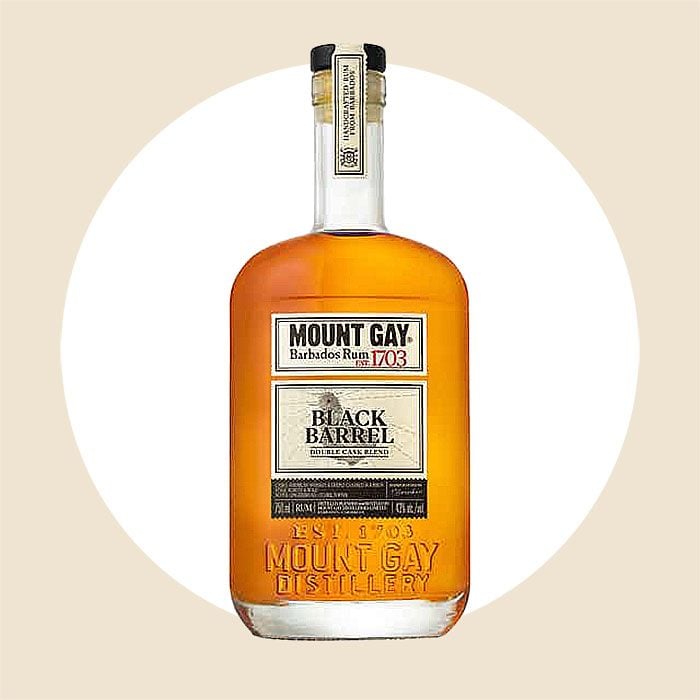
Mount Gay Black Barrel
It’s fitting to start where it all began. Barbados, where Mount Gay has been producing since 1703, is considered the birthplace of Caribbean rum. Today Trudiann Branker, the brand’s first female master blender, continues to ensure every bottle stays true to Mount Gay’s history and standards while bringing new techniques and creative vision to rum making.
While Branker’s personal stamp can be found in limited-edition releases, Mount Gay Black Barrel is one of the newer blends that she oversees. Aged in American whiskey casks for three to seven years, then six months in charred bourbon casks, this rum is balanced, rich, complex and smooth. This is one of the best rums to sip neat or use in a cocktail like a Bridgetown sour.
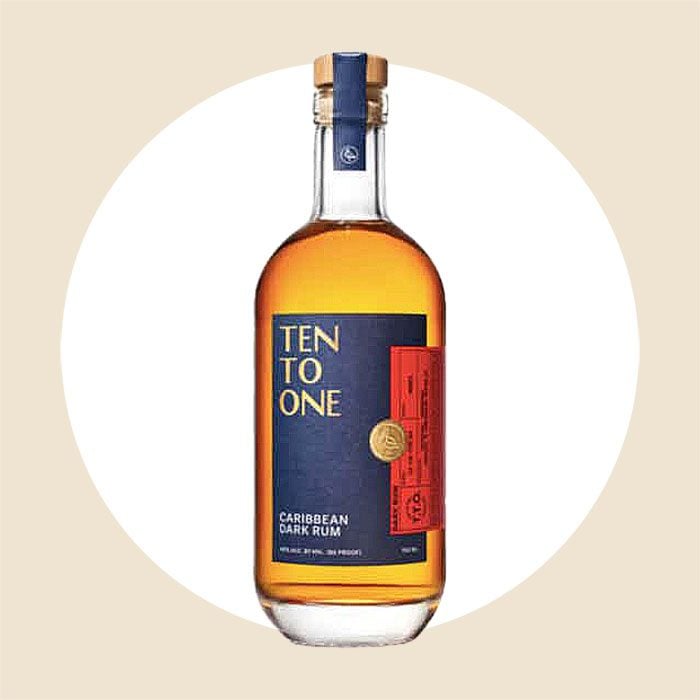
Ten To One Dark Rum
Ten To One founder Marc Farrell, a proud Trinidadian native, is out to challenge the expectations of what rum could and should be. Making waves since its first release in 2019, this blended rum is made with Barbados, Dominican, Jamaican and Trinidian rums, and aged in American white oak bourbon barrels.
Although classified as a dark rum, which can often have coloring added, Ten To One dark rum has no added sugar, coloring or flavoring. It’s pure, unadulterated deliciousness with lots of baking spice notes, fruit, cedar and leather. Like many aged rums, sip this one on its own, or enjoy in a cocktail like an elevated Dark ‘n’ Stormy.
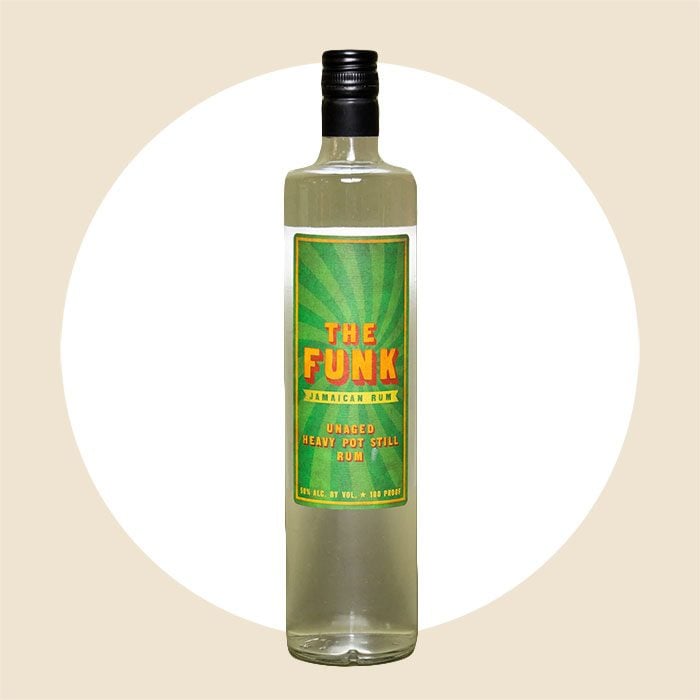
The Funk
Most of the best Jamaican rums you can get here in the U.S. are blended dark and aged rums. That’s why The Funk is so unique. “What’s most unusual about The Funk is that unlike most heavy-pot still rums, it’s not aged and does not contain added sugar, making it way more drinkable in my opinion,” says Gaby Mlynarczyk, author of Clean and Dirty Drinking, and consultant and former beverage director to many acclaimed cocktail programs across the country.
She particularly likes the earthy aromas, a result of fermentation with native wild yeasts. “It has an insane amount of funk, and is a go-to for a classic mai tai or hot buttered rum,” she says.
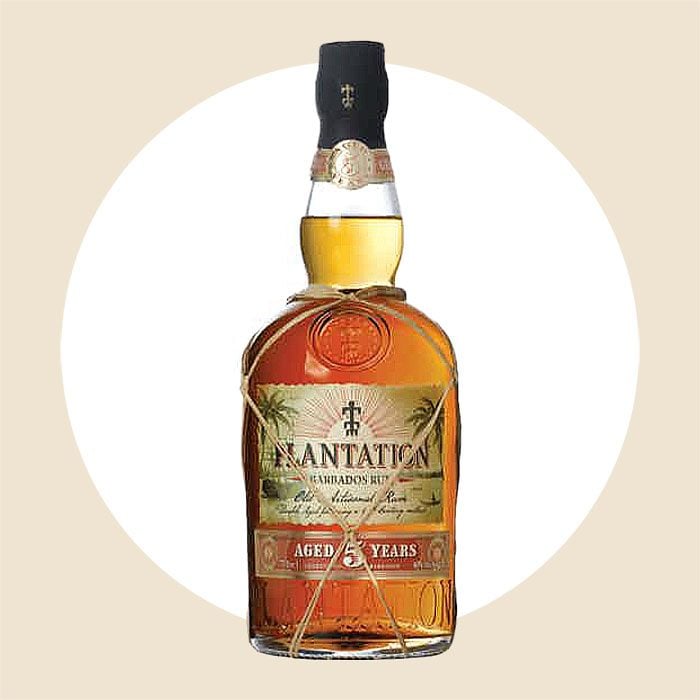
Plantation Barbados 5 Year
This French-owned company is widely known for a full spectrum of award-winning rums produced from countries all over the Caribbean. If your favorite cocktail bar makes a lot of rum drinks, be sure it has a few bottles from Plantation on the menu.
This particular Barbadian-style rum is aged for three to four years in American oak in Barbados, then matures for a few more years in oak casks previously used for Cognac in France. There is some added sugar as well, which can be common for many rums (though most definitely not Bajan rums, which is why this one is a bit unusual). The five-year rum has a subtle woodsy, molasses and spiced flavor, something that’s easy to sip neat, but also adds a bit of complexity in classic rum cocktails.

Flor de Caña 18
Flor de Caña has been producing rum in Nicaragua since 1890, and today it’s the first spirit to be carbon neutral and fair trade certified; it’s also kosher. The entire portfolio of rum is exceptional, but the 18-year is an award-winning rum that’s widely sipped and savored by aficionados and newcomers to the spirit.
Aged in white oak barrels sealed with plantain leaves, there are no additives or sugar in this amber-colored rum. With notes of toffee, tropical fruits, spice and vanilla, it’s beautifully well rounded, something to sip neat or on the rocks, best enjoyed with an orange peel.
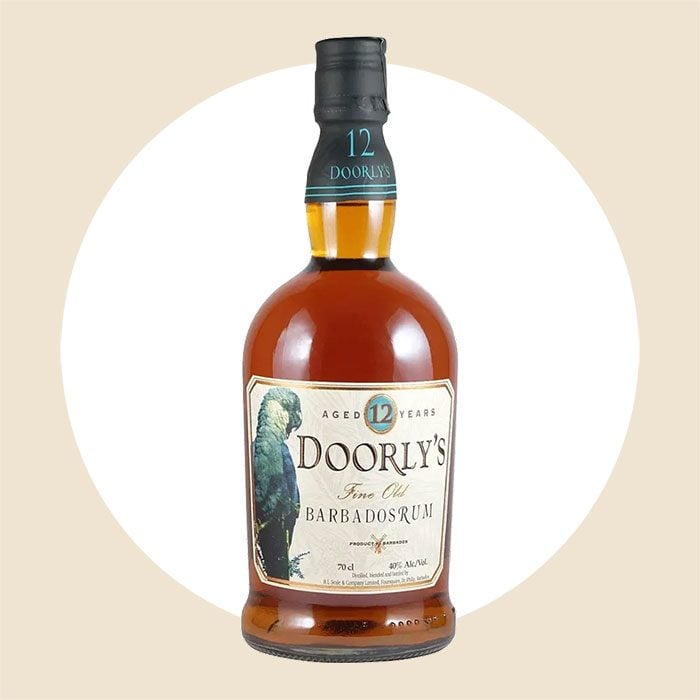
Doorly’s 12 Year
Doorly’s produces a range of rums at the Foursquare Distillery in Barbados. Rob Burr, a long-time rum collector, founder of Rob’s Rum Guide, and co-producer of the Miami Rum Renaissance Festival in South Florida, says it’s a brand that’s helping bring prestige back to Barbados for rum production. “This 12-year-old Bajan might be the best value in the rum world today,” he says.
A blend of pot and column still rums—the former adds complexity and depth, while the latter brings a good balance of aroma and flavor—the rum is aged in American white oak casks for a full 12 years. It has a lovely copper color and a nose full of rich dried fruit, vanilla and toffee notes. “It’s a perfect sipping rum,” Rob adds.
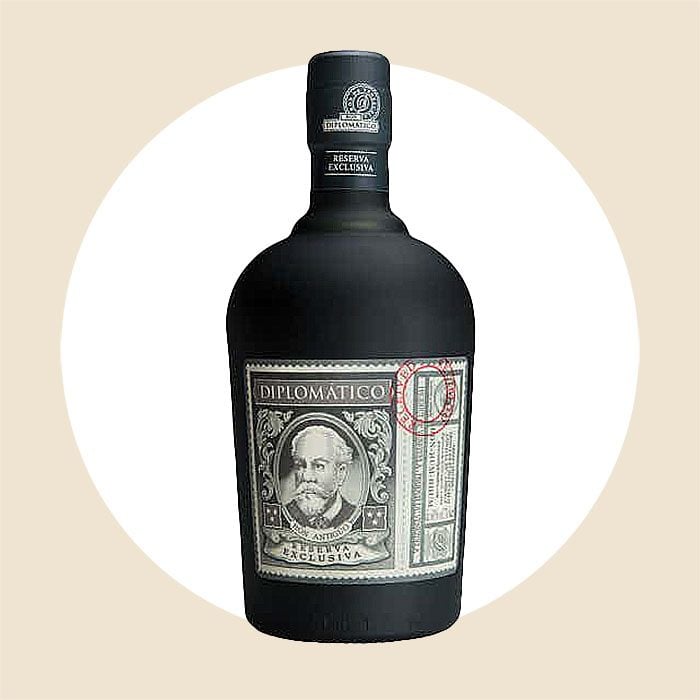
Diplomatico Rum Reserva Exclusiva
Venezuela isn’t known for its rum production, but this top-tier brand holds its own against any from more familiar rum-producing countries. Diplomatico’s distillery lies at the feet of the Andes Mountains, which offers perfect conditions for growing sugarcane. Using three different distillation processes for all of its rums, each is unique, well-rounded and delicious.
The Reserve Exclusiva is a signature blend that’s aged in oak casks for up to 12 years. You’ll find hints of orange peel, toffee, nutmeg and vanilla notes, with a nice amber color and long-lasting finish. Serve this one straight up.
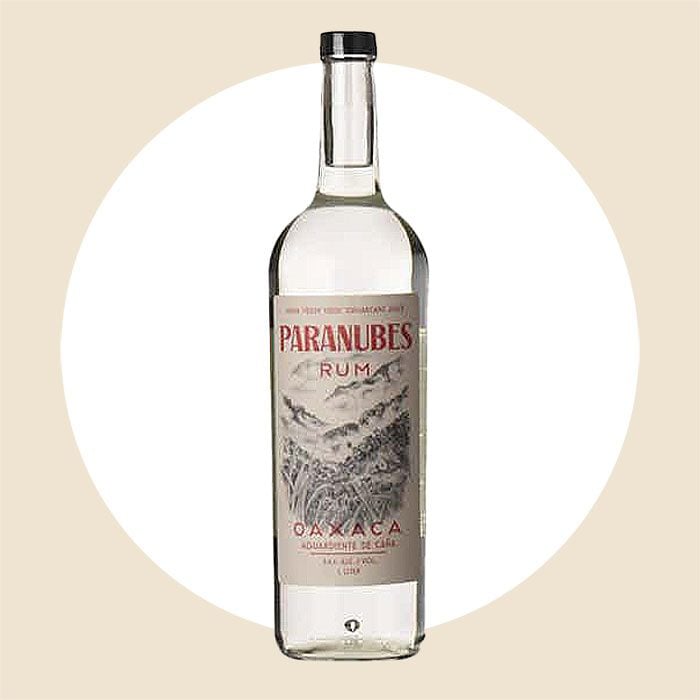
Paranubes
You’re more likely to see mezcal from Oaxaca than rum, but Paranubes is out to change that. First, you have to know the difference between rhum agricole and rum. Both are products of sugarcane, but rum is made from molasses, a byproduct of refining sugar; rhum agricole, similar to Brazil’s cachaca, is made directly from freshly pressed sugarcane. Martinique has an official designation for rhum agricole, but fresh sugarcane rum is produced around the world, including Hawaii and Mexico.
Bartenders who love rum love rhum agricole for how it showcases terroir, or where the sugarcane is grown, and for its complexity and grassy, earthy and funkiness. The sugarcane grown for Paranubes is free of pesticides and fertilizers, and there are no additives in this rum. Gaby loves its intense tropical notes of banana and delicate grassy notes. “Paranubes makes an incredible classic daiquiri,” she adds. Next, try this banana rum drink.

Don Q Reserva 7
This budget-friendly aged rum has all the hallmarks of a Puerto Rican rum, mainly that it’s lighter in body than, say, Barbados rum, and packs a punch of flavor and complexity for the price. Aged in American oak barrels for at least seven years, the rum has a dark amber color and smooth finish, with prominent notes of warm spices and molasses. You can easily sip this neat or mix in cocktails, like an old-fashioned or even a rum-based espresso martini.
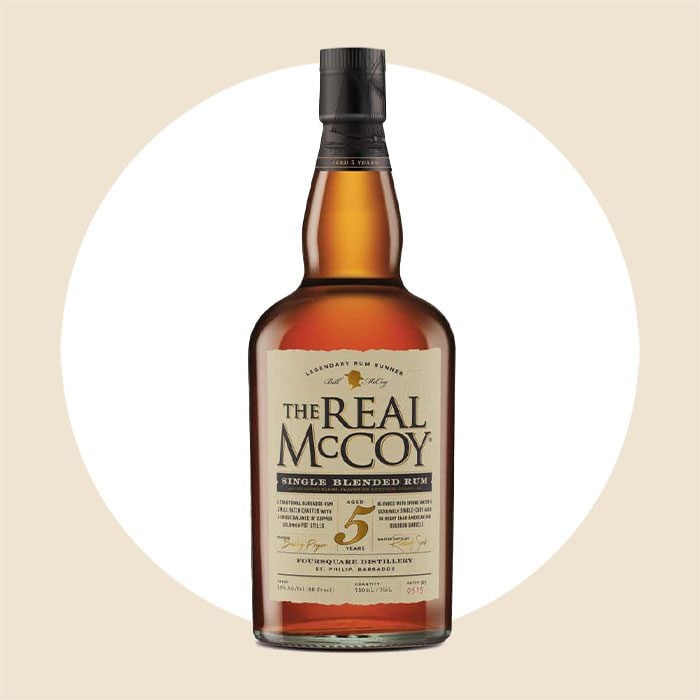
The Real McCoy 5 Year Rum
To Phil Collins, beverage director for California’s TableOne Hospitality, this all-time favorite rum from Barbados stays true to the original way rum was made centuries ago. Meaning: It starts with only molasses and water, with no added sweeteners, flavorings, perfumes or chemical stabilizers.
This rum brand distills in column and pot stills, and ages this rum in heavily charred American oak ex-bourbon barrels. That gives it a soft roundness in texture, with dried fruit, brown sugar and vanilla aromas, and a toasted nuttiness and buttery warm spice flavor. “It’s delicious to sip on, but it really makes a killer old-fashioned,” Phil says.
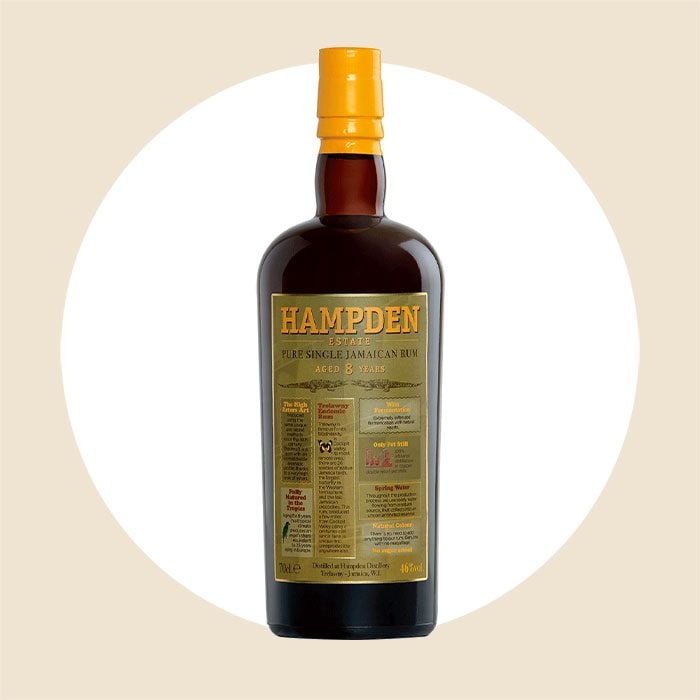
Hampden Estate 8YO
Made with wild fermentation, natural spring water and in pot stills, this Jamaican rum has a distinctly funky flavor, thanks to its high levels of esters (a chemical compound that’s a result of the fermentation process). And the tropical Jamaican climate helps accelerate the aging process, so you get an intense nose of fruit and sweet spices with a touch of smokiness. “It is also worth noting that it is a single estate rum, meaning that from cane to bottle Hampden Estate is involved in every step of the process, which truly shows in the final product,” says Sean Cork, bartender and host at L.A.’s Cana Rum Bar.
Sean also likes the versatility of Hampden 8YO. “Though I usually prefer to sip on it over a large ice cube, I have definitely indulged and worked it into everything from a daiquiri to a mai tai and have always been extremely happy with the results,” he adds.
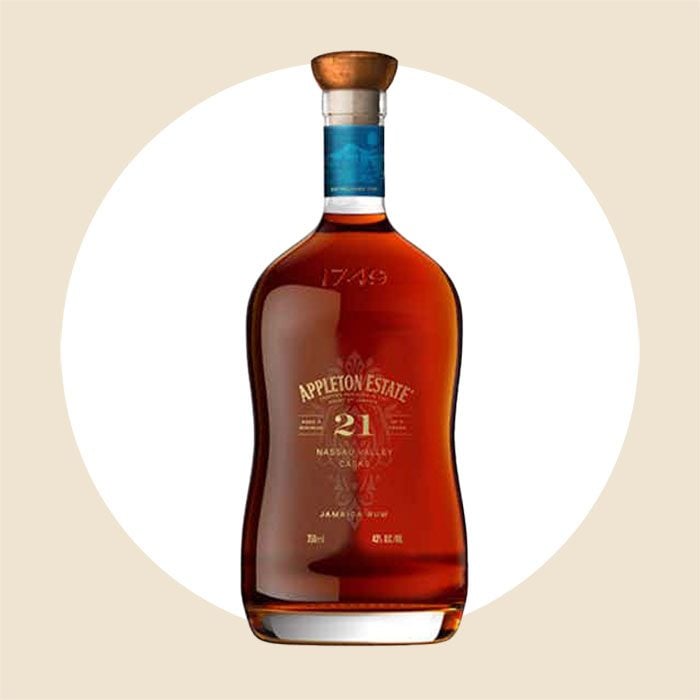
Appleton Estate 21 Year Old Nassau Valley Casks
As one of the oldest and most well-known sugar estates and rum brands, Appleton Estates is a standard when it comes to Jamaican rum. The master distiller utilizes a “cane-to-cocktail” ideology, meaning the brand oversees everything from on-site growing and harvesting sugarcane to the distilling, aging and blending of rum.
It’s all about the terroir for Appleton, from the wide variety of sugarcane to the proprietary strain of yeast to the water, that makes it a standout rum for rum lovers and novices alike. If you’re thinking of going big, this blend of pot and column still rums is aged for at least 21 years in oak and is the quintessential sipper full of warm spices, nutmeg, vanilla and hints of coffee. Get the fancy snifter out: You want this served neat.
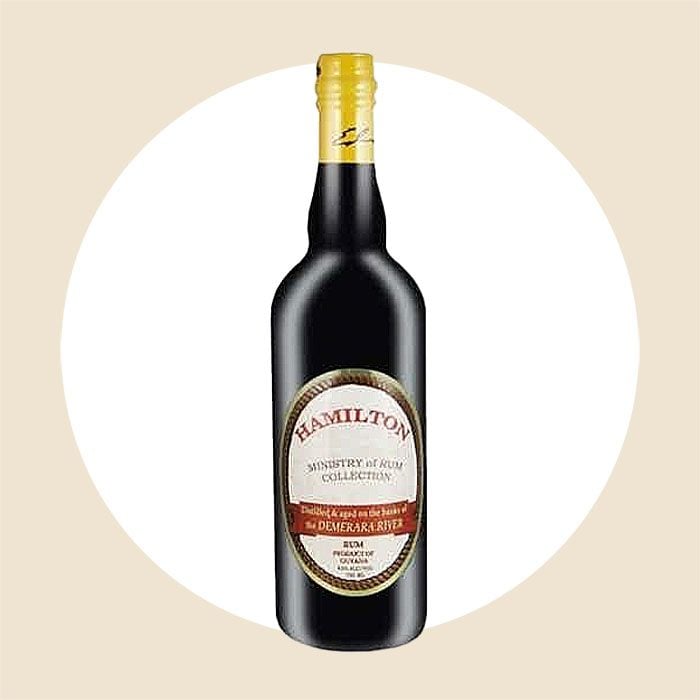
Hamilton 86 Demerara Rum
Hamilton Rum is the brainchild of Ed Hamilton, rum importer, author and webmaster of Ministery of Rum. In addition to his line of stellar Jamaican rum, he produces and imports rum from around the Caribbean. This blend from Guyana is in almost every rum lover’s lineup. The sugarcane comes from fields along Guyana’s Demerara River, thus the name, and the humid climate impacts the aging process, which gives it its smoky characteristics.
Brandon Ristaino, co-founder and beverage director of Good Lion Hospitality, whose bars include the rum-saturated Test Pilot in Santa Barbara, California, leans on Hamilton’s Ministry of Rums line, which he finds easily accessible and a good value. “The 86 has a classic taste profile, which includes rich fruit, nut, spice and smoky oak flavor,” he adds. “And it really shines in cocktails, everything from an old-fashioned to daiquiri or layered in tropical drinks.”
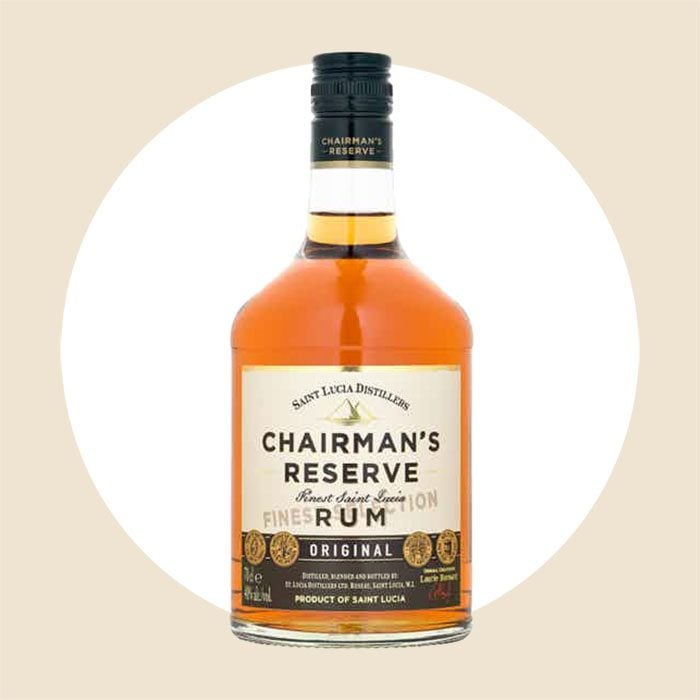
Chairman’s Reserve Forgotten Cask
Established in 1931, St. Lucia Distillers, which produces Chairman’s Reserve, is the last remaining distillery on the island of Saint Lucia. This blend is basically the original Chairman’s Reserve rum recipe that gets an extra three years in ex-bourbon barrels. It’s meant to mimic rum barrels that were hidden after a fire broke out at the distillery; when those barrels were found, that rum was released on its own as a very special edition. Now some Chairman’s Reserve is held back every year for extra aging and released as The Forgotten Casks, a mahogany-colored rum with an intense nose of sweet raisins, tobacco and vanilla. With soft spices and grilled tropical fruit on the palate, it’s a great sipping rum.
“What I love about rum is its ability to work with other spirits in cocktails,” says Josh Ibañez, bar manager for Rumba, one of the best rum bars in the country (along with its sibling, Inside Passage). “This one carries a really nice leather and tobacco presence to it. It’s very versatile, and even plays well with aged whiskey and Scotch.”
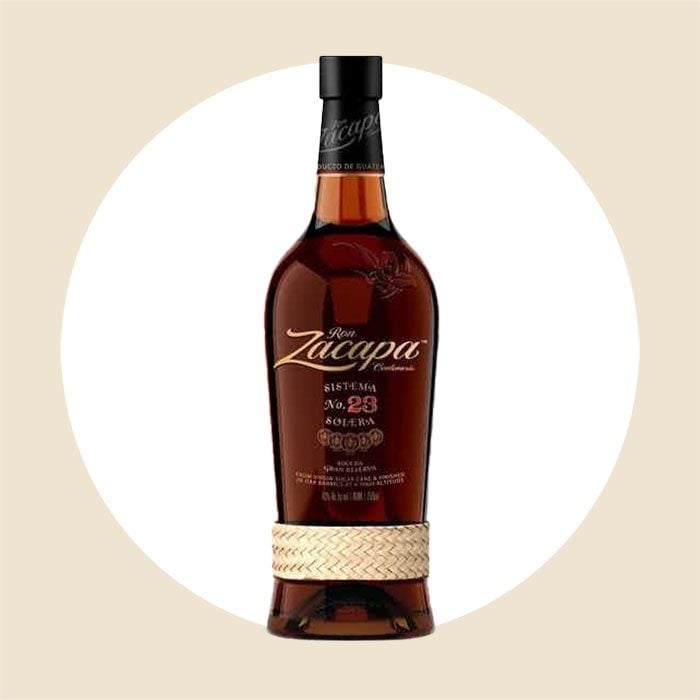
Ron Zacapa No. 23 Centenario
Created in 1976 to commemorate the city of Zacapa’s centennial, this Guatemalan rum brand makes aged rums using the solera system, the same often used for aging whiskey. Like rhum agricole, this rum is made using the first press of sugarcane, which brings out the characteristics of the volcanic soil and water of the area. For fermentation, a yeast strain derived from pineapples is employed, adding fruity and earthy aromas to the finished product.
No. 23 is a blend of rums aged from 6 to 23 years in barrels previously used for American whiskey, delicate sherries and fine Pedro Ximénez wines. This smooth and balanced rum has sweet aromas of caramel and butterscotch, with flavors of dried fruit, nutmeg and tobacco. It’s best served neat, on the rocks or in cocktails made with other brown spirits. Try swapping it in for some of our favorite whiskey drinks.
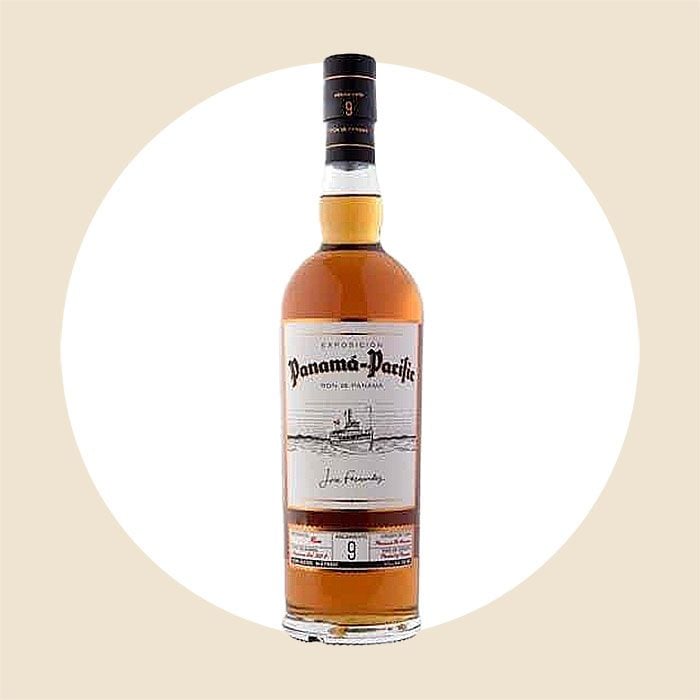
Panamá-Pacific Rum 9 Year
This rum is made from sugarcane harvested from Provincia de Herrera in the interior of Panama, which is then turned into molasses. Using yeasts extracted from pineapples, fermentation and distillation take place at the San Carlos distillery, where the humid climate is perfect for creating and aging rum. The full lineup includes a clear three-year rum to one aged for 23 years, but the Panamá-Pacific Rum 9 Year is a perfect middle ground for bartenders like Gaby.
“It’s distilled in copper and rested in ex-bourbon barrels then aged in Tennessee whiskey barrels, which brings out fragrant caramel and vanilla notes,” she says. Can you mix it in cocktails? Absolutely. Make a palmetto with 2 oz. of Panamá-Pacific Rum 9 Year, 1 oz. of Italian vermouth and 2 dashes of Angostura bitters. Stir with ice and serve up.

Clément Rhum Blanc
One of the preeminent producers of rhum agricole on the island of Martinique, Rhum Clément was first established in 1887 by Homere Clément, a political icon who is also considered the “godfather of rhum agricole.” Thought to be the first Black man to receive a doctorate of medicine in France, he was the first to start using pressed sugarcane juice instead of molasses for making rum. Today you’ll find the brand on the shelves of bars like Rumba in Seattle, La Descarga in Los Angeles, and many tiki-drink havens across the country.
Unoaked, the white rhum sits in stainless steel tanks for six months, which helps retain its vegetal (think: cut grass and green beans) and naturally sweet qualities. It’s absolutely perfect for mojitos, pina coladas and daiquiris.
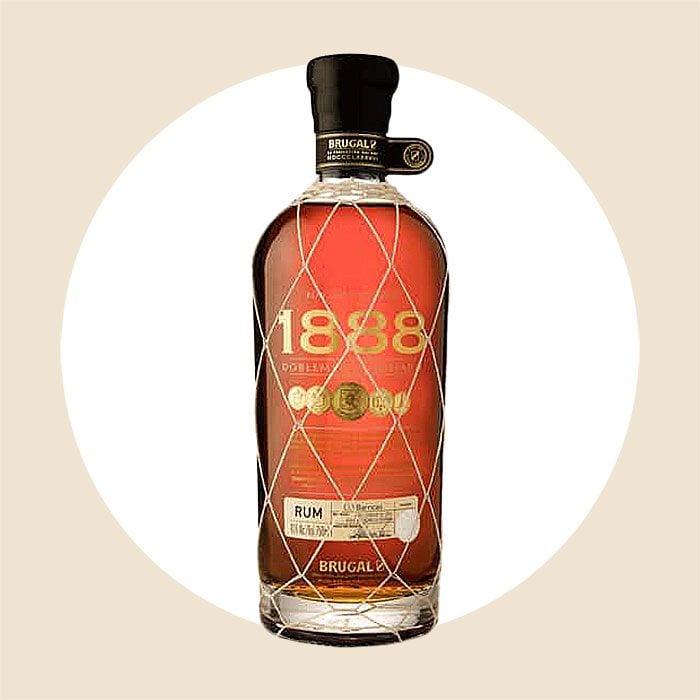
Brugal 1888 Doblemente Añejado
Crafted in the Dominican Republic, this sipping rum is the result of a double aging process in bourbon and sherry casks. It has notes of vanilla and toffee, cocoa and typical warm spices you get from oak barrels. This rum is smooth, full of flavor and perfectly balanced. With deep amber hues and well-rounded flavors, it’s great served on its own with or without ice. But it’s also good for spirit-forward cocktails like a rum Negroni.
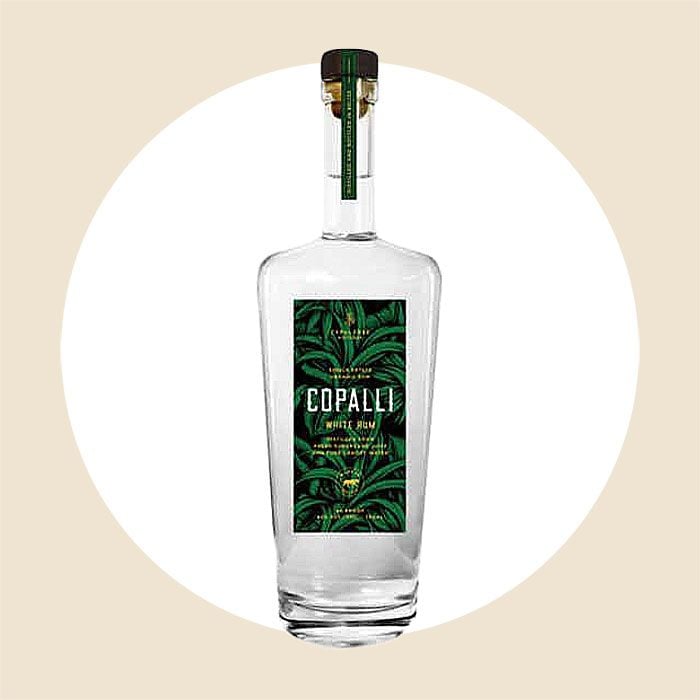
Copalli Rum
This organic fresh sugarcane rum is crafted in the heart of the rainforest in Southern Belize at the Copal Tree Distillery, adjacent to the Copal Tree Lodge and its 3,000-acre organic farm. The whole operation is designed to run on biomass in a zero-impact facility.
All three Copalli rums are made with heirloom sugarcane, pure canopy water and yeast—and that’s it. The white rum is distilled in pot and column stills, then rested in stainless steel. Named Best in Show of all Rums at the 2022 TAG Spirits Competition, it’s smooth enough to drink straight on the rocks, but really shines in something like a daiquiri.
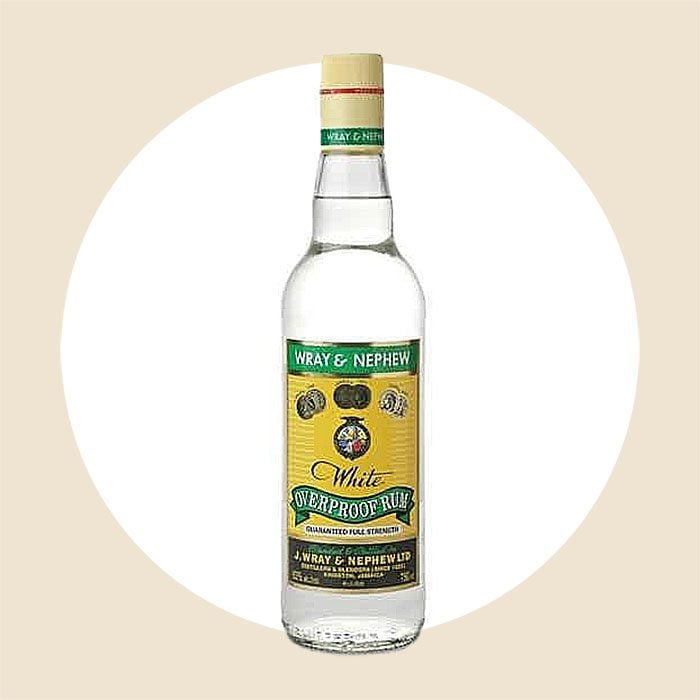
Wray & Nephew White Overproof Rum
A sister brand of Appleton Estate, Wray & Nephew was started back in 1825 by John Wray, a bar owner and businessman, and further developed by his nephew, Charles Ward, an entrepreneur.
The White Overproof Rum, the most popular rum in Jamaica according to Liquor.com, contains an astounding 63% alcohol and is traditionally served with a bit of water or grapefruit soda. A few drops of this overproof also make a great finishing touch to tiki cocktails.
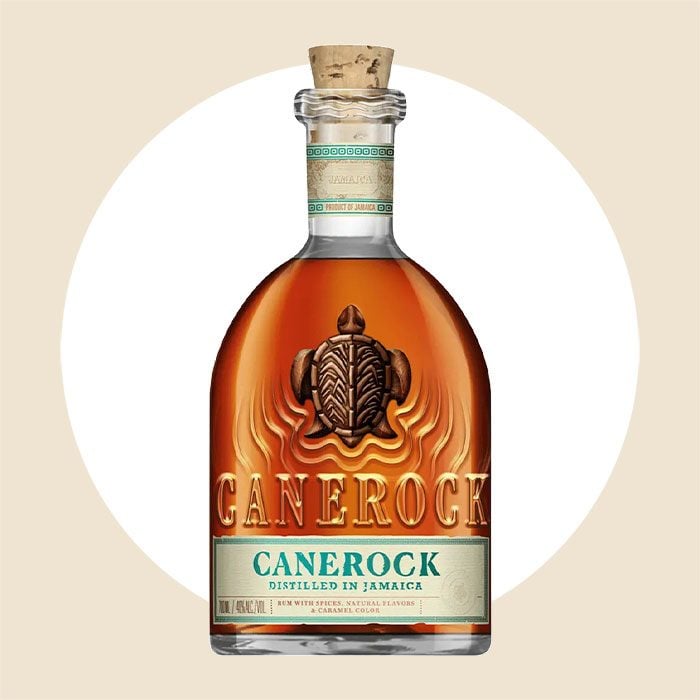
Canerock
When you’re ready to move beyond Captain Morgan but don’t want to give up the deliciousness of spiced rum, Canerock is a good next step. A blend of traditional rums from two legendary distilleries—Long Pond, established in 1753, and Clarendon, established in 1755—this dark amber rum gets infused with spices like ginger, nutmeg and cinnamon. It’s finished in ex-sherry casks, which lend sweet vanilla notes and delicate oak tannins.
While his rum library is vast and seemingly endless, Rob Burr keeps track of newcomers like this Jamaican spiced rum. “It breaks the mold for the category with a well-aged, oak-rich base infused with a delicious blend of natural spices and flavors,” Rob says.
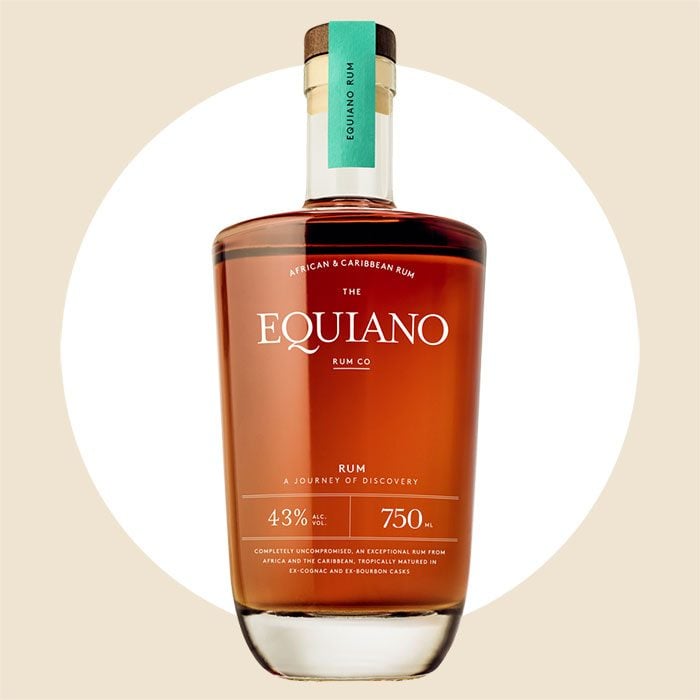
Equiano Rum
The world’s first Afro-Caribbean rum, Equiano is a blend of aged molasses rums from Mauritius and Barbados. The rum first matures in Cognac casks in Mauritius, an East African country in the Indian Ocean, then it’s blended with rum from the award-winning Foursquare Rum Distillery in Barbados. There, it’s aged in ex-bourbon casks, then finished in white American oak.
With no additives, sugar or spices added, this rich and deeply flavored rum is special but reasonably priced so you can feel good about sipping it on the regular.
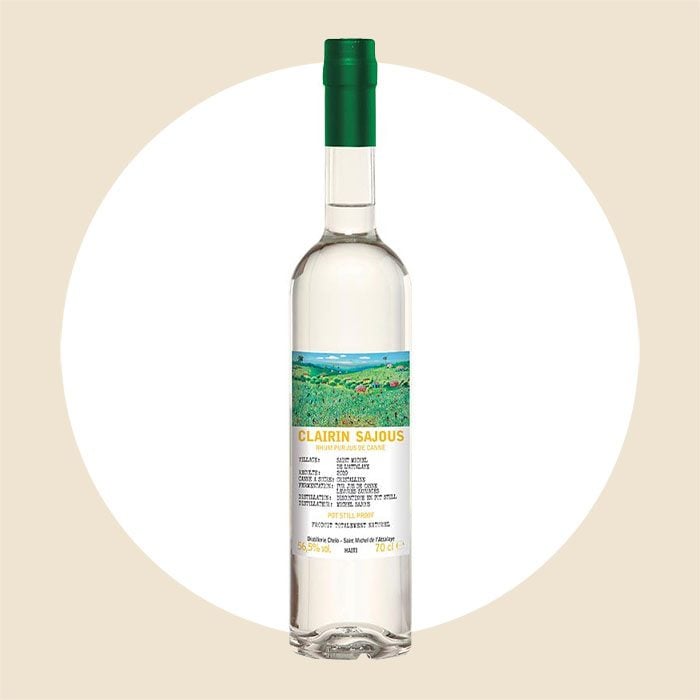
Clairin Sajous Rum
Haiti’s fresh sugarcane rum is slowly making its way onto American bar shelves and carts. Like rhum agricole and cachaca, clairin is made with fresh-pressed sugarcane juice versus molasses. Clairin isn’t just rum, says Liquor.com; it’s a cultural emblem of Haiti. Michel Sajous produces Clairin Sojus at his Distillerie Chelo in the northern high village of Saint Michel de L’Attalaye. There, the organic sugarcane is cultivated and pressed with wild yeasts, then distilled in a pot still.
For Gaby, it’s a favorite type of rum for a classic mojito. “The bold aromas of grass, herbs, green apples and fresh-pressed sugarcane really shine through,” she adds.
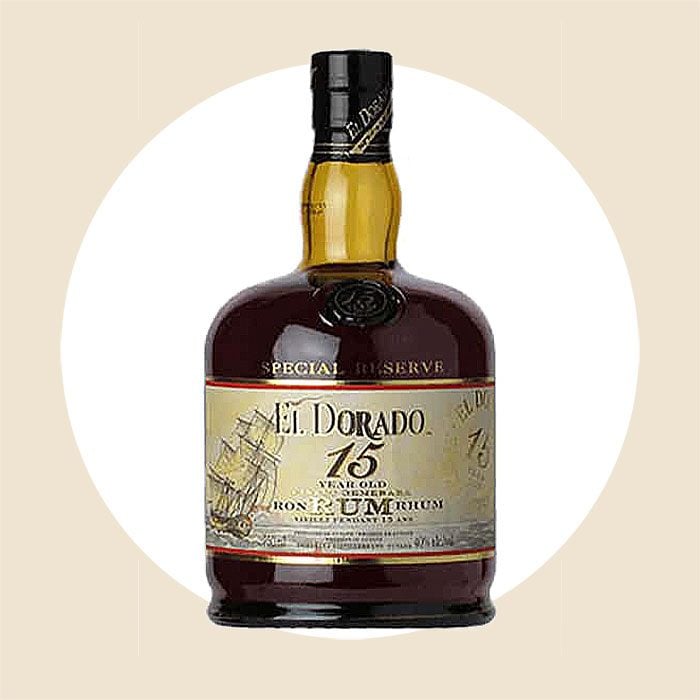
El Dorado 12 Year Old
Made by Demerara Distillers of Guyana, the country’s last remaining distillery, El Dorado is an elegant, award-winning rum prized by aficionados, bartenders and casual sippers alike. Distilled in coffee and double-wooden pot stills, and aged for 12 years in whiskey and bourbon barrels, it has a rich mouthfeel, a mellow sweetness and hints of fruit flavors and spice.
Serve this one neat, on the rocks or let it bring out the best of your favorite rum-based cocktail.
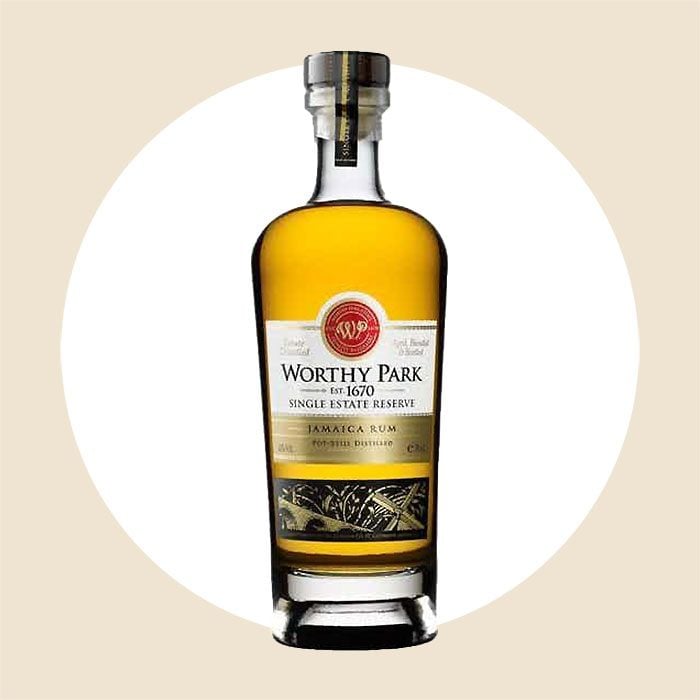
Worthy Park Single Estate Reserve Rum
This traditional Jamaican rum consistently wins awards across the board. Single estate means it’s all batch-distilled, aged, blended and bottled on-site at the distillery, which sits in the heart of Lluidas Vale surrounded by mountain ranges and lush and fertile terrain. The rums used in the blend are aged between 6 and 12 years, each selected for its unique complexity and distinctive taste.
With no additives or dyes, the Single Estate Reserve rum has a natural light amber color and a fruity nose with hints of banana, pineapple and more. On the palate, it’s sweet with vanilla and honey, a bit of toasty oak and spices like nutmeg. This is a pleasant rum to sip straight.

